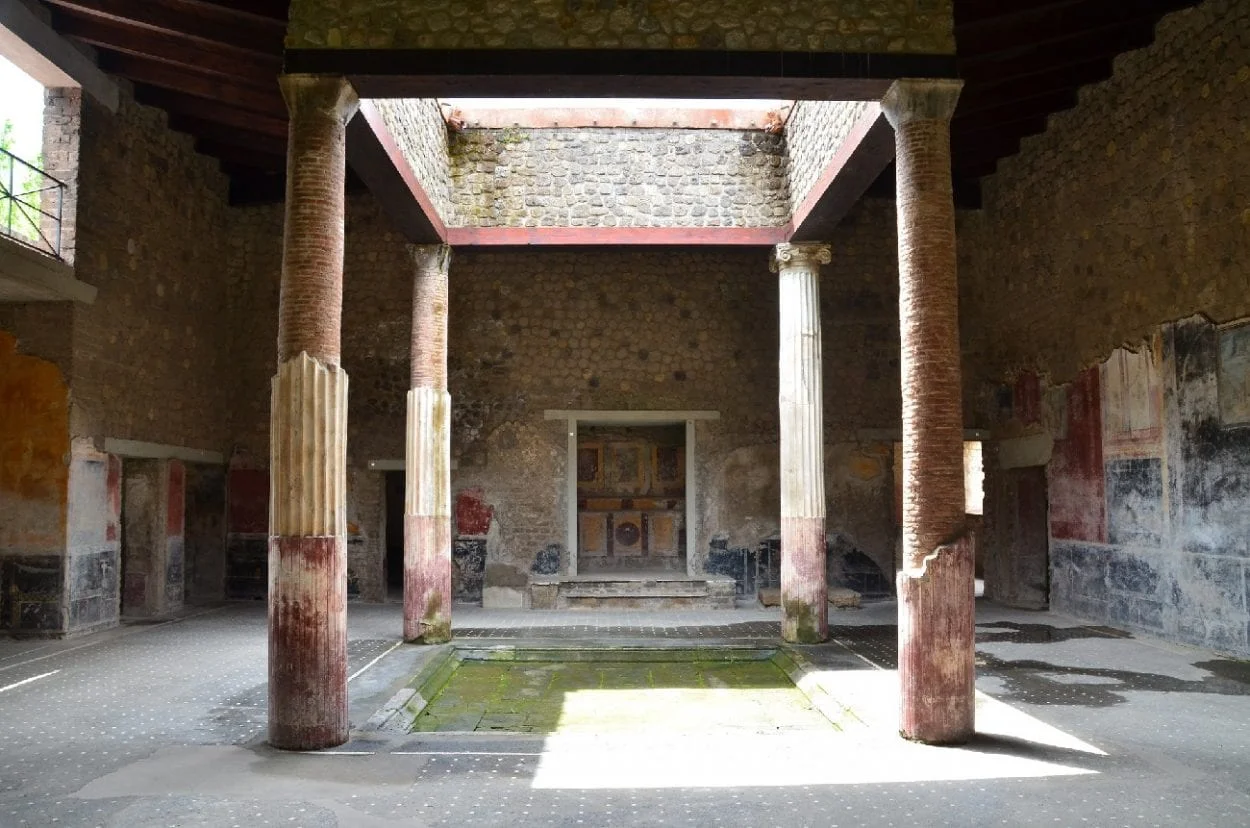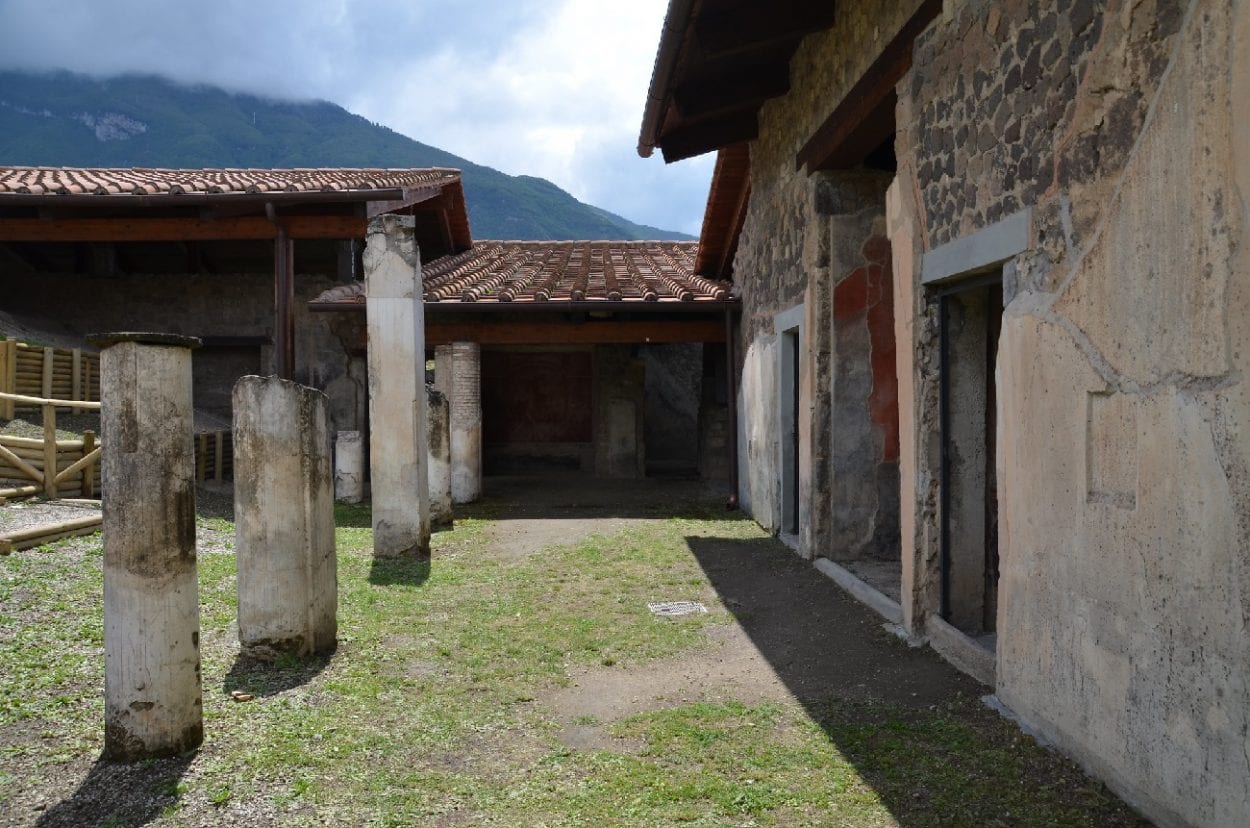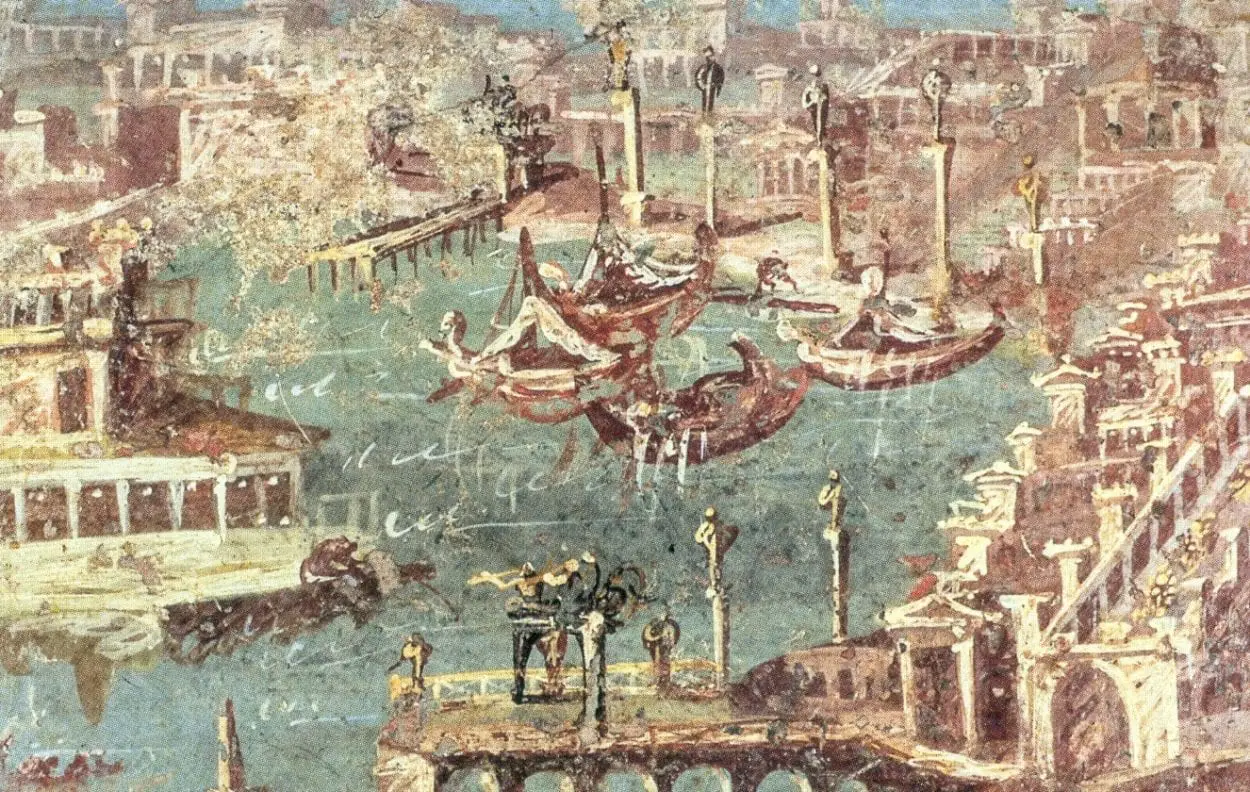Stabiae was an ancient Roman town and seaside resort near Pompeii, that was largely buried during the AD 79 eruption of Mount Vesuvius in present-day Italy.
The early settlement was founded during the Archaic period around the 8th century BC on the coast at the eastern end of the Bay of Naples, with evidence of Corinthian, Etruscan, Chalcidian and Attic origins.
By the 6th century BC, an Oscan (native inhabitants of Campania) port town had emerged, comprising of mainly Samnites, but this saw an economic slowdown in favour of the development of nearby Pompeii.
Stabiae would later serve as a military port for the Nucerian federation, alongside Nuceria Alfaterna, Herculaneum, Pompeii, and Surrentum, but surrendered to the rule of the Roman Republic during the Samnite wars in 308 BC.

In 91 BC, the Romans fought in a conflict known as the Social Wars, against the “socii” confederates of Rome who demanded the right to vote and Roman citizenship. The Roman General Lucius Cornelius Sulla Felix (commonly known as Sulla) marched on Stabia, completely destroying the town as an example for other cities and tribes in Italy.
The town quickly recovered from the destruction and became a popular resort for wealthy Romans, consisting of a forum, temples, a podium, a gymnasium, and a tabernae with arcades.
Accounts by the Roman author Pliny the Elder records that several miles of luxury coastal villas were built at Stabiae along the edge of the headland, with notable Roman figures such as Julius Caesar, the emperors Augustus and Tiberius, and the statesman-philosopher Cicero all owning properties there.

In AD 79, Mount Vesuvius erupted, releasing a deadly cloud of super-heated tephra and gases to a height of 33 km (21 mi), ejecting molten rock, pumice, and hot ash at a rate of 1.5 million tons per second. The resulting pyroclastic surges and heavy ashfall enveloped Pompeii and Herculanium, with large parts of Stabiae buried in thick tephra and ash.
Pliny the Elder died at Stabiae during the eruptions, but many of its inhabitants were spared and resettled. Publius Papinius Statius recites in a poem to his wife – “Stabias renatas”, meaning Stabiae reborn.
Header Image Credit : Public Domain





